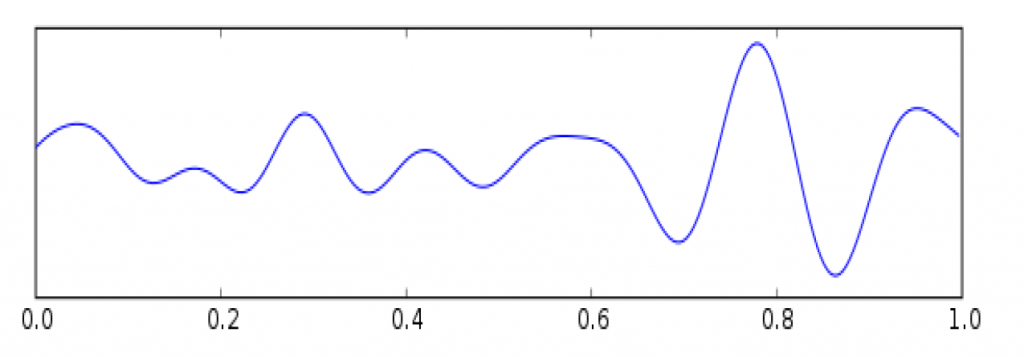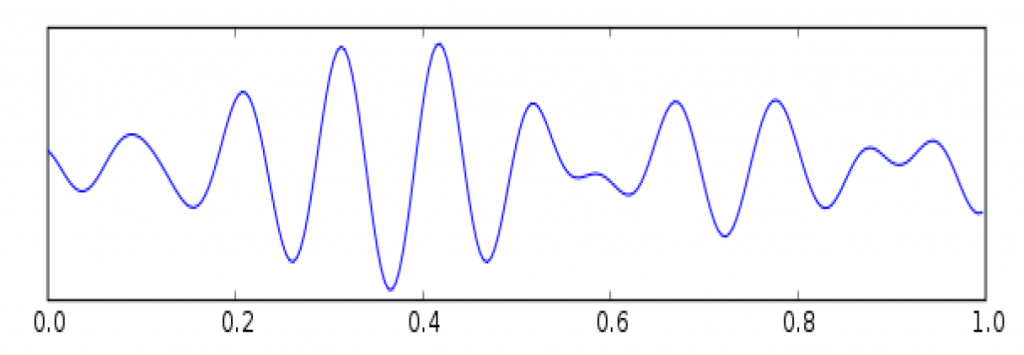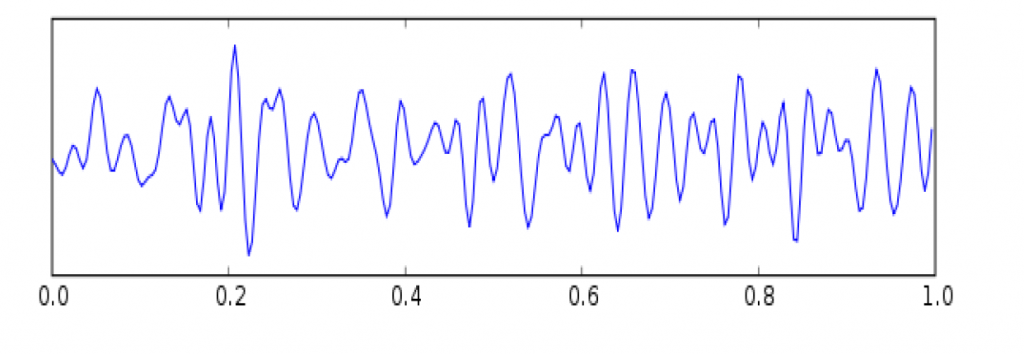Electroencephalography (EEG) Based Home Appliances Control for Handicapped Persons
Electroencephalography (EEG) Based Home Appliances Control system. Every society gives an important role to each person in it. Disabled people, though being less efficient physically, can equally step forward along with other people towards the development of their society. To invent a device that can facilitate them in standing with the world has always been a challenging task and a research interest for Engineers and Scientists. Some work has been done practically and many different approaches have been used in this regard e.g. speech recognition, image processing, gesture recognition, small muscular movements based control etc.
The problem with all of them is that they may be incompatible to a specific type of disabled persons. They require at least one dimension or sense of a person to be normal for proper work. Brain signals are associated with every alive person. We have used brain signals for control purposes. Using EEG, winks of subject have been detected which are then coded for the operation of home appliances. Earlier, people have used only single wink to be coded. This limits the number of tasks to be performed. Electroencephalography (EEG) Based Home Appliances Control system.
We have described sequence of winks using a single correlation window which makes multiple operations to be performed. Also, it increases accuracy of our system by making false detections less probable. Brain signals are amplified after capturing them. Then, they are digitized and sent to computer for processing and visualization. In computer, useful information is extracted and given back to appliances to be controlled. In first mode, operation of the devices
depends on wink sequence. In second mode, we have captured alpha waves from occipital region and on the basis of their concentration, home appliances are turned on and off.
In any society, every person has its important role. The same is true for physically dis- able, paralyzed or old people who, though being less efficient physically, can take steps toward the progress of society using the power of their minds without being a burden on other people around them. With the advancement of technology, it should be made possible to help them and encourage them to play their positive role, too. To invent such a device that can facilitate them in standing with the world has always been a challenging task and a research interest for Engineers and Scientists. Some work has been implemented practically.
A lot of approaches have been used in this regard e.g. speech recognition, image processing, gesture recognition, small muscular movements based control etc. The problem with all of them is that they may be incompatible to a specific type of disabled persons. They require at least one dimension or sense of a person to be normal for proper work. Keeping this thought in mind, a complete system has been made that can acquire brain waves of the subject, process termed as electroencephalography and abbreviated as EEG, and can send commands to turn on and off the home appliances using the information acquired from these waves. Electroencephalography (EEG) Based Home Appliances Control system.
The advantage using brain waves is the compatibility of the device for all disabled persons because brain signals are associated with every alive person. Using EEG, winks of subject has been detected which are then coded for operation of home appliances. From here onwards, the word `blink’ will be used in place of `wink’. Blinking left eye refers to winking left eye and same goes for the right blink. Earlier, people have used only single blink to be coded, e.g, a wheel chair will turn left for left blink and right for right blink.
This limits the number of tasks to be performed i.e. only two. We have used sequence of winks using a single correlation window which makes multiple operations to be performed. Also, it increases accuracy of our system by making false detections less probable. In this way, we have widened the scope of the technology under use as well as improved the accuracy of the system.
Requirements of EEG system
The main requirement is to develop a robust front-end system that can extract valuable information from the brain signals it captures by performing data processing in real time and after that, decode this useful information to determine which action must be taken against the human activity detected.
Electrical Nature of human body
Electrical Nature Of Human Body Scientists now conceive the universe to be electric in nature. Along with gases, liquids and solids, plasmas are now considered as the fourth state of matter. Some scientists believe that 99% of all matter in the universe is in plasma state. Plasma is composed of ionized particles. Plasma physicists assert that plasma in space carry electrical current, making this universe electric in nature. Plasmas are so effective at conducting electrical current that they are considered superconductors. In his book, Thunderbolts of the God, David Talbot says:
“From the smallest particle to the largest galactic formation, a web of
electrical circuitry connects and unifies all of nature, organizing galaxies,
energizing stars, giving birth to planets and, on our own world, controlling
weather and animating biological organisms. There are no isolated islands
in an electric universe.”
Within this electric universe, the human body is also considered to be electric in nature at its fundamental level. Without electricity, you wouldn’t be reading this right now. And it’s not because the printer wouldn’t have worked. It’s because your brain wouldn’t work. If you scuffle your feet across a carpet and then touch something made of metal you get a small shock of electricity. Also, if you step on a piece of glass you will feel the pain at once because it is electrically transmitted along the nerves to your brain. Everything we do is a result of control signals running through our bodies. These control signals are essentially electric in nature.
As we learned in physics, everything is made up of atoms, and atoms are made up of protons, neutrons and electrons. Protons have a positive charge, neutrons have a neutral charge, and electrons have a negative charge. When these charges are imbalanced, an atom becomes either positively or negatively charged. This unequaled charge distribution causes electrons to move from low potential to high potential. This ow of electrons, or a negative charge, is what we call electricity. Since our bodies are huge masses of atoms, we can generate electricity.
Electricity is a key to survival. Electrical signals are fast. They allow for an instantaneous response to control messages. If our bodies relied entirely on the movement of chemicals to tell our hearts to speed up when something is chasing us, we portably would’ve died out a long time ago.
Heart Signals
The essential signals that tell our hearts to speed up when we’re in danger come from a mass of cells in our heart called the sinoatrial node, or SA node. It is located in the right atrium, and it controls the rhythm of our heartbeat and the movement of blood from the heart to every other part of our body. It is our body’s natural pacesetter, and it uses electrical signals to set the pace. These heart signals can be observed using ECG.
Brain Signals
The process of thought is a series of electrical pulses that run across millions of synaptic connections within the brain. Our nervous system is a hard-wired network designed to carry sensory information and instructions in the form of electrical pulses. These electrical pulses can be viewed using EEG. The amplitude of brain signals is very low as compared to heart signals and lies in the range of 10-100 microvolts.
Electroencephalography
The abbreviation EEG stands for Electroencephalography. Electro means `electrons’, encephalon means `in head’ and graphy means `to write’, so Electroencephalography (EEG) is the process of recording of electrical activity along the scalp and then displaying that activity on a paper or computer. The device which measures these signals is called Electroencephalogram. There are many parameters related with the EEG signal and the most important thing about EEG is that we can even measure the mood of a person.
what are the Sources of EEG?
The brain’s electrical charge is asserted by billions of neurons. On the cellular level bio- electric signals are related to ionic processes which develop as a result of electrochemical activity within the cells. A potential arises when membrane channels of neurons open so that ions may diffuse across the membrane.
Neurons are constantly exchanging ions with the extracellular milieu, for example to maintain resting potential and to propagate action potentials. Following Figure indicates how this mechanism is implemented in brain cells. The axon and dendrite are connected with a synapse, which transmits the signal from a presynaptic neuron to a postsynaptic neuron.
When some stimulus evokes a nerve impulse to travel across the brain, the signal is moving from a neuron to another. Ions of like charge repel each other, and when many ions are pushed out of many neurons at the same time, they can push their neighbors, who push their neighbors, and so on, resulting in a wave. This process is known as volume conduction.
When the wave of ions reaches the electrodes on the scalp, they can push or pull electrons on the metal on the electrodes. Since metal conducts the push and pull of electrons easily, the difference in push and pull or voltage between any two electrodes can be recorded by voltmeter. Recording these voltages over time gives us the EEG.

The electric potentials generated by single neurons are too small to be picked by EEG. EEG activity therefore always manifests the summation of the synchronous activity of thousands or millions of neurons that have alike spatial orientation. If the cells do not have similar spatial orientation, their ions do not line up and produce waves to be detected.
Pyramidal neurons of the cortex produce most EEG signal because they are well lined up and fire together. As voltage field decreases with the square of the distance, activity from deep sources is more difficult to detect than currents near the skull. Scalp EEG activity shows oscillations at a variety of frequencies. Several of these oscillations have characteristic frequency ranges and are associated with different states of brain functioning (e.g. waking and the various sleep stages).
Research that measures both EEG and neuron spiking finds the relationship between the two is complex with the power of surface EEG only in two bands that of Gamma and Delta relating to neuron spike activity.
EEG Bands and Their Comparison
The waves emitted from the brain depends upon the state of the brain. These waves occupy different low frequency bands typically from 1Hz to 20Hz. It should be noticed that while these are the universally accredited bands still they are not solid definitions of the range of brain-waves. While researchers tend to follow these guidelines, many scholars use their own specific boundaries depending on the range they choose to focus on. Additionally, some researchers define the bands using decimal values rather than rounding to whole numbers (for example, one researcher may define the lower Beta band cut off as 12.3, while another may use the value 13), while still others sometimes divide the bands into sub-bands. Generally, this is only done for the sake of analysis. These bands are described below
Delta Waves EEG
Delta is the frequency range up to 4Hz. It tends to be the highest in amplitude and the slowest wave. It is seen normally in adults in slow wave sleep. It is also seen normally in babies. It may occur focally with subcortical lesions and in general distribution with diffuse lesions, metabolic encephalopathy hydrocephalus or deep midline lesions. It is usually most prominent frontally in adults.

Theta Waves EEG
Theta is the frequency range from 4Hz to 7Hz. Theta is seen normally in young children. It may be seen in drowsiness in older children and adults; it can also be seen in meditation. Excess theta for age represents abnormal activity. It can be seen as a focal disturbance in focal subcortical lesions; it can be seen in generalized distribution in diffuse disorder or metabolic encephalopathy or deep midline disorders or some instances of hydrocephalus. On the contrary, this range has been associated with reports of relaxed, meditative and creative states. Electroencephalography (EEG) Based Home Appliances Control system.

Alpha Waves EEG
Alpha is the frequency range from 8Hz to 12Hz. Hans Berger named the first rhythmic EEG activity he saw as the \alpha wave”. This was the \posterior basic rhythm” (also called the \posterior dominant rhythm” or the \posterior alpha rhythm”), seen in the posterior regions of the head on both sides, higher in amplitude on the dominant side. It emerges with closing of the eyes and with relaxation, and attenuates with eye opening or mental exertion. The posterior basic rhythm is actually slower than 8Hz in young children (therefore technically in the theta range). Electroencephalography (EEG) Based Home Appliances Control system.
In addition to the posterior basic rhythm, there are other normal alpha rhythms such as the mu rhythm (alpha activity in the contralateral sensory and motor cortical areas) that emerges when the hands and arms are idle; and the \third rhythm” (alpha activity in the temporal or frontal lobes). Alpha can be abnormal; for example, an EEG that has diffuse alpha occurring in coma and is not responsive to external stimuli is referred to as \alpha coma”.

Beta Waves EEG
Beta is the frequency range from 12Hz to about 30Hz. It is seen usually on both sides in symmetrical distribution and is most evident frontally. Beta activity is closely linked to motor behavior and is generally attenuated during active movements. Low amplitude beta with multiple and varying frequencies is often associated with active, busy or anxious thinking and active concentration. Rhythmic beta with a dominant set of frequencies is associated with various pathologies and drug effects, especially benzodiazepines. It may be absent or reduced in areas of cortical damage. It is the
dominant rhythm in patients who are alert or anxious or who have their eyes open.

Gamma Waves EEG
Gamma is the frequency range approximately 30-100Hz. Gamma rhythms are thought to represent binding of different populations of neurons together into a network for the purpose of carrying out a certain cognitive or motor function.

Mu Rhythm definition
Mu ranges 8-13Hz, and partly overlaps with other frequencies. It reflects the synchronous firing of motor neurons in rest state. Mu suppression is thought to reflect motor mirror neuron systems, because when an action is observed, the pattern extinguishes, possibly because of the normal neuronal system and the mirror neuron system \go out of sync”, and interfere with each other.

Also read here